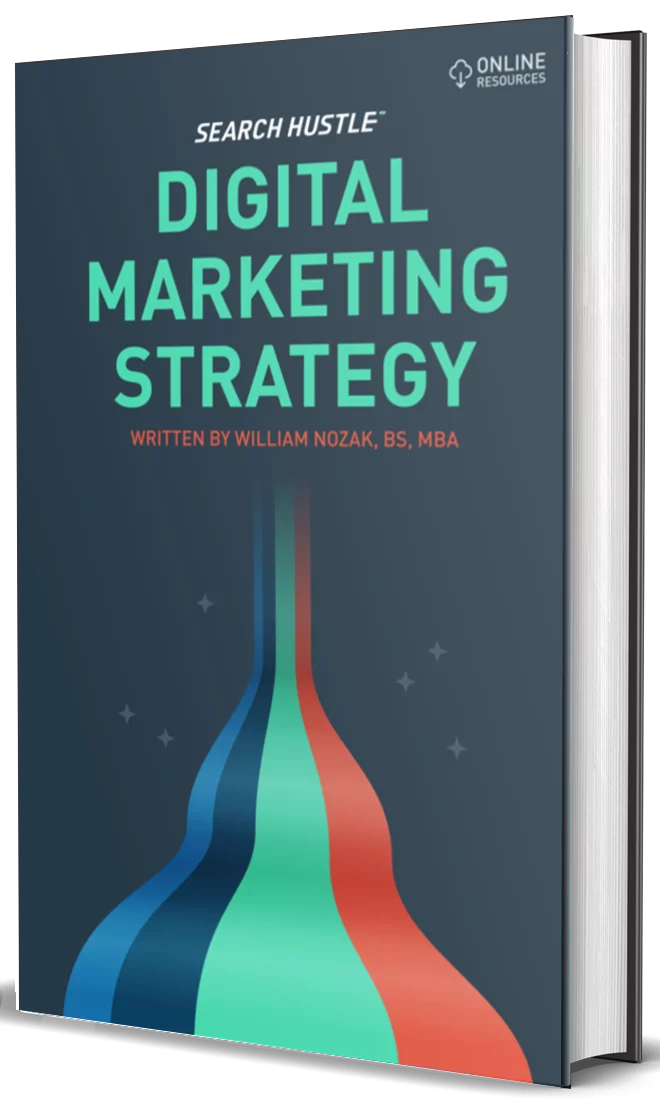What Is a Landing Page, and Why Is It Important?
Learn all about what a landing page is and why it’s important for your business with Nozak Consulting.
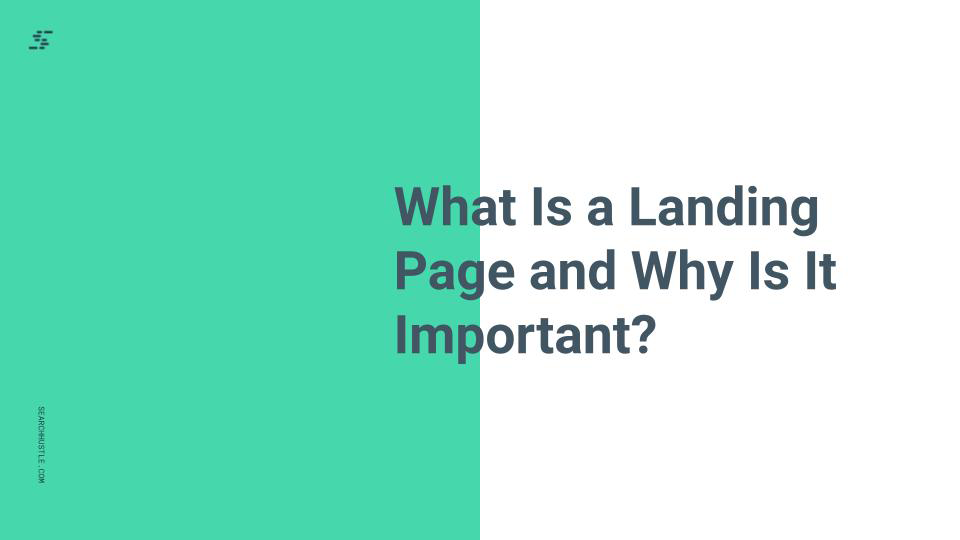
The world of search engine marketing (SEM) can seem complicated – almost alien. This is especially true when you consider specific terminologies and technical abbreviations. One term it pays to be familiar with is “landing page.”
To succeed in any online endeavor, you must know and understand what a landing page is. Understanding why landing pages are so important is key. A great landing page can make a massive difference in conversions. Cross-industry, you’re looking at an average landing page conversion rate of 2.35%. However, at the top end of the scale, the highest-hitting pages see conversions of between 5 to 11%.
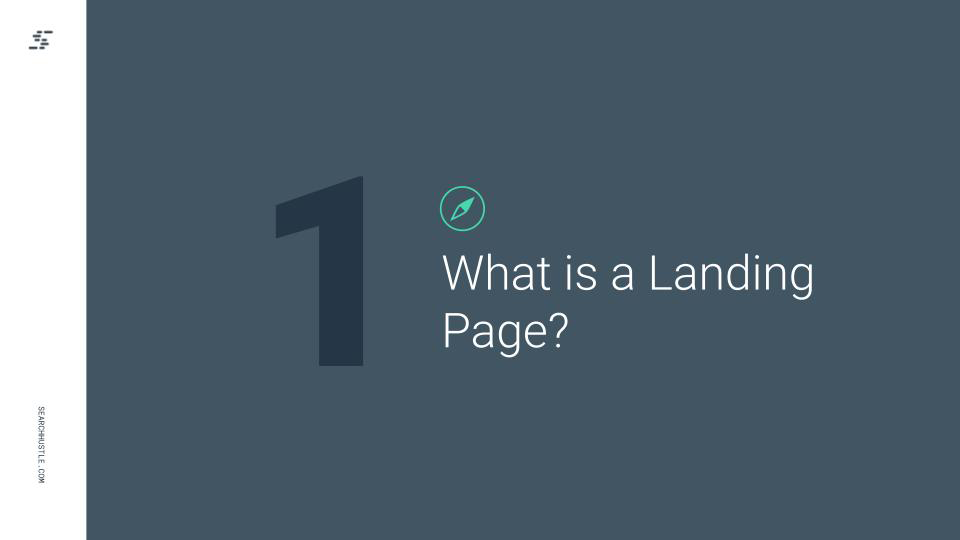
What Is a Landing Page?
The answer for online marketing is a page designed to receive viewers from external sources.
Completely separate from a home page, interior page, or any other part of a website. This way, there is a chance to interact with a viewer before they view any other content.
This interaction is what symbolizes the landing page. A landing page should allow you to collect important data or deliver a promotion to the visitor. For instance, you can create a landing page with a place to register an email in exchange for a coupon or other offer.
The best landing pages are click-through. This means they lead a visitor to click through to another area of a site. This can bring viewers straight to the e-commerce section of a website, down into a form, or some other area of interest. Doing this can help convince the user of the value to register or provide the specified data you need them to view.
When engaging in a promotion, a specific link to a specific landing page can be used to attract different portions of your user base or to keep certain areas of the website separate.
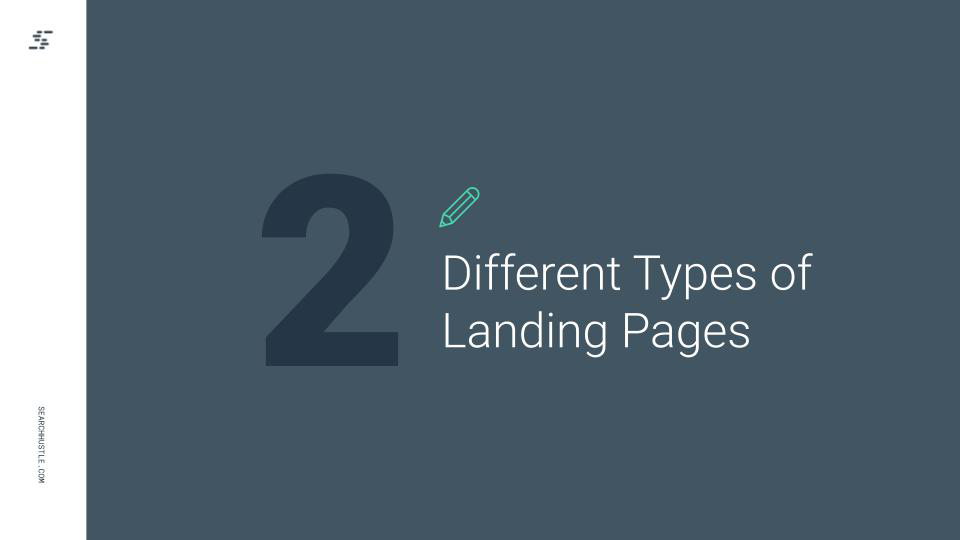
Landing Page Types
There are many landing pages to consider, each with its own purpose. Generally speaking, they all accomplish the same function. They convert users, most often from a paid advertisement, email, or referral campaign in the form of a form or offer.
Lead Capture Page
A popular variety of landing pages is a lead capture page. This landing page has been specifically built for a singular purpose. In this case, the page will collect leads. While this process can occur at any point, it is vital for a lead capture page.
You should combine whatever offer you present to get leads, such as a coupon or discount, and the information simultaneously. This is what makes having a lead capture landing page so effective; you offer and ask at the same time. For the customer, this is both convenient and enticing for them to look around further. As with all elements of a site’s design, you should always focus on making it easy for the user to know what step to take next.
Lead capture pages have a conversion rate average of around 23%. This is why they are so valuable and worthy of investment.
Click-Through Page
The click-through landing page is a lot different from the other pages we’ve discussed. The goal of this page has nothing to do with collecting information. There doesn’t need to be a form embedded in this page, and you aren’t asking your customer for anything.
A page like this frequently links to the shopping cart or some other transaction page on your website. It can act as a final chance to add or modify an order, suggest related products, or another form of final communication.
Click-through pages are not intended to slow or bog down the user. Instead, make sure the page is clear and concise with a strong call to action. This will continue to pull the user through the transaction process and help secure the final sale.
Sales Page
A sales page is extremely important, occurring at the very bottom of the sales funnel. This type of page is designed to convince people to make a purchase. Sales pages can be among the most difficult to create because they require a definitive decision from the customer.
There is more at stake for the customer on a sales page. Any purchase, however small, requires a financial investment. In contrast, squeeze pages offer a low-risk, simple exchange, like an email address for a discount code.
Consequently, sales pages require more finesse to make them work. Pushing too hard can chase customers away, and not pushing at all could lead the customer to delay or think twice about their purchase decision. Even if the customer intends to come back and finish the transaction, there is always the chance they will forget or change their mind.
A good call to action:
-Is specific (book an appointment, buy a product)
-Creates a sense of urgency (try for free now, call today, check out before it’s gone)
-Directly addresses the customer (uses the understood ‘you’)
All of these tactics can help make the sales page more successful.
Make your sales page about the customer, and address what you know is important to them. Instead of highlighting the features of your product, showcase the benefits to the consumer. If you were selling lawn mowers, you could highlight how the customer can mow faster and more efficiently rather than just stating the horsepower or turning capabilities. Always ask yourself, what problem does my product or service solve? How does my product or service make the customer’s life better?
Squeeze Page
The splash page is the most simple and straightforward landing page of all. Splash pages contain minimal content and very few (if any) images. While you can encounter a splash page anywhere in the sales funnel, they are most frequently used at the top.
If you’ve ever been to a site or clicked on a link that directs you to a “verify your age” page, you’ve encountered a splash page. Once a user clicks the yes or no option, it will direct them accordingly. These landing pages are simple, easy to make, and easy to understand.
Infomercial Style Landing Page
The infomercial is an old yet effective strategy used across almost every advertising medium. From long radio spots to late-night shows in the 1990s and early 2000s, infomercials have long proved their value to customers and companies alike. Of course, making an infomercial is no easy endeavor.
At their heart, infomercials tell a story. They present a problem and a solution.
When you make an infomercial landing page, remember this is not a simple squeeze page or splash page. The customer should be given a long-form explanation of what the product is and why they need it. Emotional appeals and a sense of urgency can help draw in customers and keep them engaged.
An infomercial-style landing page can also be tied to multimedia content such as videos, simple graphs or infographics, or testimonials.
Splash Page
The splash page is the most simple and straightforward landing page of all. Splash pages contain minimal content and very few (if any) images. While you can encounter a splash page anywhere in the sales funnel, they are most frequently used at the top.
If you’ve ever been to a site or clicked on a link that directs you to a “verify your age” page, you’ve encountered a splash page. Once a user clicks the yes or no option, it will direct them accordingly. These landing pages are simple, easy to make, and easy to understand.
Viral Landing Page
If you need to build brand awareness, then a viral landing page can help accomplish this task. The viral landing page will usually focus on content, offering either informative or engaging copy with the goal of enticing readers to share the page on social media.
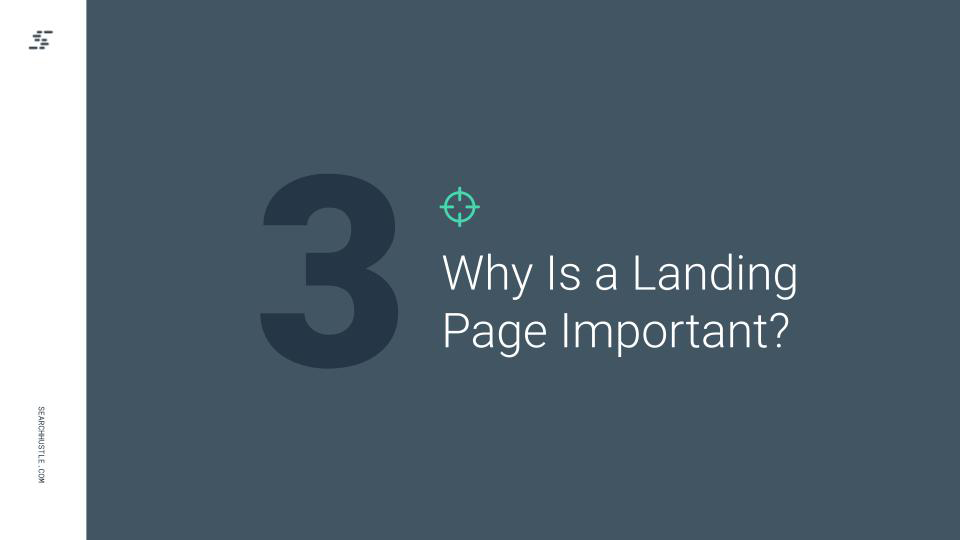
Why Is a Landing Page Important?
As your brand matures, it becomes increasingly important for your brand to have an optimized digital presence.
The brand is another dog in the marketing fight. It creates branded terms, brand equity, trust, and other elements that increase conversion. Although we do still see examples of businesses that have been successful without a website, it seldom happens. It will become increasingly rare as millennials and beyond continue to increase their buying power.
Once these core concepts have been established, the next step is to gain more leads and conversions. Landing pages are excellent at bringing in more leads in exchange for offers and driving conversions.
A significant benefit of landing pages is that they can work tightly with any PPC campaign. If you’ve already paid for the click via advertising, then you must ensure that the click has as much impact as possible. Using a landing page connected to a PPC link will ensure you can turn marketing costs into sales, profit, and better brand reach.
Anything that drives traffic to your site will help increase your SEO score. There are best-practice steps you should take to optimize the landing pages you have. As with everything, a landing page needs to be made with SEO in mind.
Generate Leads
A landing page plays an essential role in helping a business to generate leads and move visitors through the sales process. There have been repeated studies that showed that a business can capture more leads simply by sending visitors to a dedicated landing page instead of the home page.
Too many companies try to drive visitors to the home page. While traffic to the home page is good, it isn’t going to help boost conversion rates. People want to find the information they’re after quick and easy. They don’t want to have to peruse around a website.
This is why landing pages shine. They are specific pages that are designed with the sole purpose of displaying a specific offer.
Track Data
The analytics of a landing page can be tracked. For example, you can discover if a user went after multiple offers to download a free e-book or signed up for multiple webinars. From this, you can potentially gauge whether a lead is near the bottom of the funnel and ready to make a purchase soon.
In addition, you can also use the analytics to understand how well marketing efforts are performing. You can conduct A/B testing to compare multiple landing pages against each other and see what’s working and what isn’t.
Examples of the type of data you can draw include:
- Time on page
- Conversion rate
- Bounce rate
- Number of leads generated
- And much more
Tracking the analytics of a landing page is important to help you establish benchmarks. It allows you to adjust marketing efforts and fine-tune the types of landing pages that work best for your website.
Gather Demographic Information
The function of a landing page is that the visitor must enter in their information in order to obtain a specific offer. While the information requested might vary, it will usually contain either contact information or demographics.
While contact information is vital to build a lead list, demographics information is equally important. This is data that can help you understand leads and segment them into different target audiences. When you can segment leads into different target audiences, you improve how effective a sales campaign can be.
Specific Goal Free of Distractions
One of the main reasons a landing page is so important is because it helps to persuade a visitor to take a specific action. Directing visitors to the home page of a website can lead to a variety of actions, from perusing the blog to checking out the About Us section.
While this type of engagement is still good, it isn’t helping a business achieve whatever goal it possibly had in mind.
This is why landing pages should be designed a certain way. A landing page should:
- Have no site wide navigation
- Be free of social media buttons
- Contain no links to other pages on the site
- Feature only one, clear offer
While these different aspects do have their place, they should be kept to other website pages. This is because having things like site wide navigation or internal links to other pages can actually end up distracting the visitor from the purpose of the landing page.
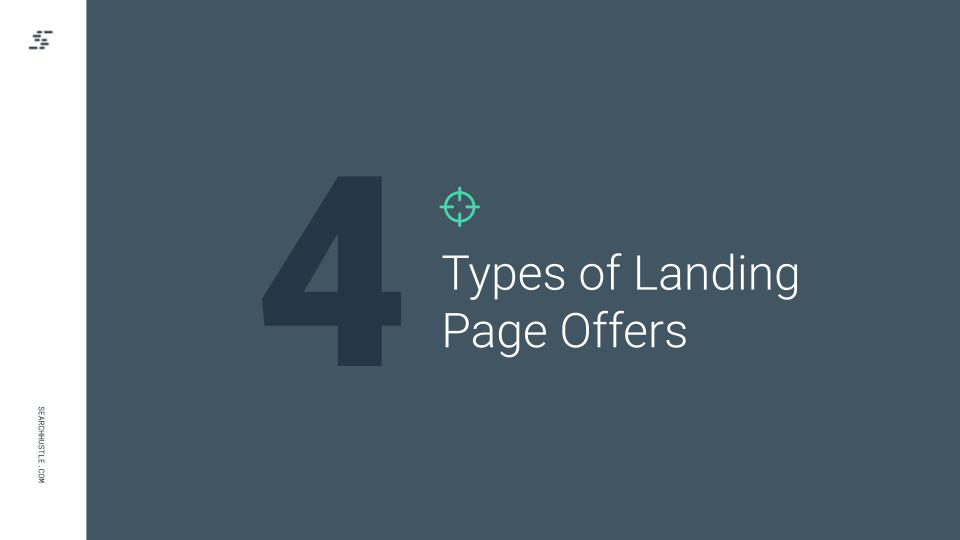
Types of Landing Page Offers
A great landing page will provide a special offer for the viewer. This is done to entice a click, registration, or even a purchase. Special offers without a home won’t do you any good, so use the landing pages as a place for special offers to exist and get exposure to new and potential customers.
Forms Need to be Simple
The last thing anyone wants to do is to chase away a prospect. If your email registration forms are too complex, they can become intimidating or concerning for a potential customer, which can result in a lower conversion rate.
Don’t Forget to Thank the Visitor
The landing page (or whatever registration process or sales mechanism is used) should always end with a thank you to the user. This retains a positive connection to the company and can cement a great first impression if everything is done right.
Newsletter Subscription
If your business sends out newsletters, then you’ll obviously want to continue to grow the subscription base for the email newsletter.
If the business has a blog, it can end blog posts with a call-to-action that asks readers to consider subscribing to the blog. The CTA can then link to a landing page where the user signs up for the email list.
Ebooks and Whitepapers
If there’s been a blog post that analytics show kept visitors engaged and shared the content widely on social media, a good next step is to release an ebook or whitepaper.
By releasing an ebook or whitepaper, a business can go more in-depth on a subject that interests its customers. You can then create a landing page where this ebook or whitepaper is available once a user completes a form to gain access to the content.
Event Registration
Every unique event that a business hosts should come on its own landing page. A landing page for an event helps you turn a site visitor into an event attendee and lead.
Online Course Enrollment
If offering online courses is part of a business, then each course enrollment should have its own individual landing page. You can use these landing pages to invite new students to sign up for a class, to enroll in more advanced courses, and more.
Free Trial
Are there free demos of a product from the business? If so, then the demo offer should have its own landing page. You can require users to fill out a form in order to gain access to a free trial of the software being offered.
App Download
Similar to a free trial, if a business is offering a mobile app then give it a landing page to help capture leads. Then, look at the analytics to gain insight into who is visiting the landing page, how many are downloading the app, etc. From there, you use the analytics to help you optimize the landing page to make it more effective.
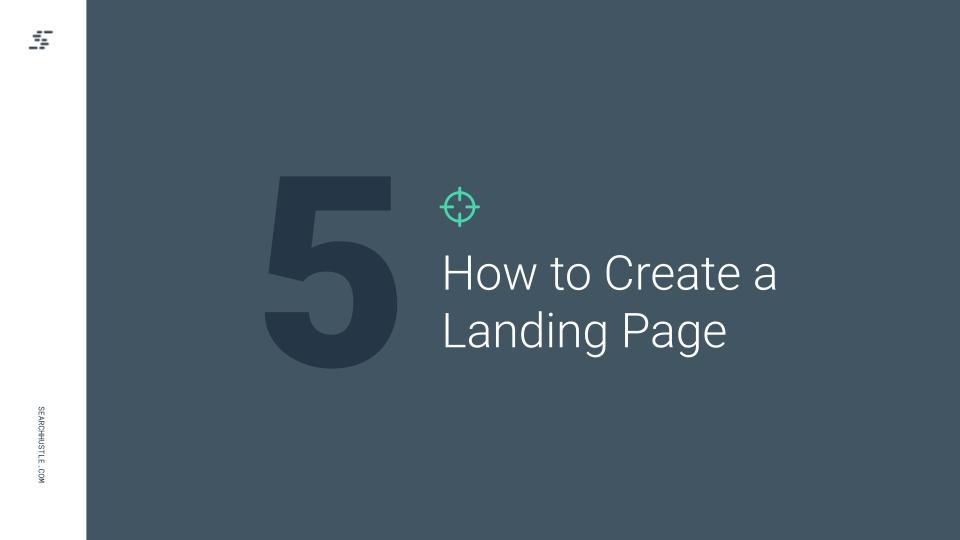
How to Create a Landing Page
There are several different ways you can go about building a landing page for a business. You can either attempt to do it yourself or instead book the services of a professional digital marketing agency like Nozak Consulting.
Use a Landing Page Builder
If you aren’t particularly skilled at website design, you can look for a landing page builder. It’s worth noting that many content management systems offer a landing page template as part of their services.
When looking for a landing page builder, it should be simple enough for you to use and intuitive. If you’re a beginner at creating landing pages, then a drag-and-drop system is the best to help ensure your workflow is fast.
Using Landing Page Templates
After you’ve found a software that can help you with creating landing pages, you should peruse several landing page templates to help give you an idea of what they should look like. It’s also a good idea to possibly conduct A/B tests between two different template designs to see which produces the highest conversion rates for you.
Entice With a Unique Proposition
Every landing page should have a single proposition or offer that’s meant to entice visitors. The proposition should be included in one of the primary headers to help gain the attention of the site visitor and encourage them to continue reading the copy. Be sure to follow the best practices for writing a strong headline and persuasive copy.
End With a Call to Action
You should consider the CTA of the landing page as one of the most important elements of the landing page. The CTA button should stand out and be obvious on the page. If you want, you can have the CTA be both above the fold and then repeat it again after the copy at the bottom of the page.
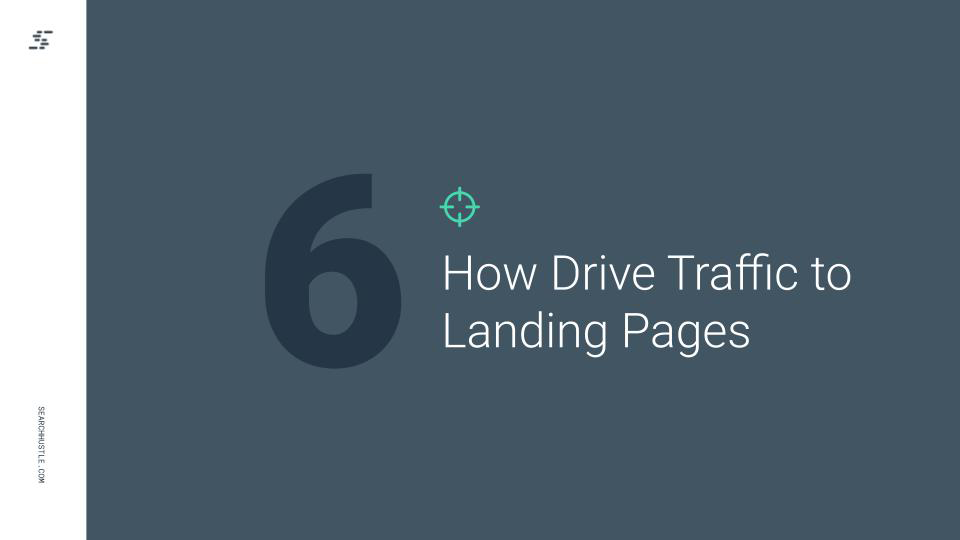
How to Drive Traffic to Landing Pages
Once you have landing pages built and live on the website, the next step will be to funnel visitors to these pages. Here’s a look at some of the most common sources of traffic for a landing page.
Paid Search Traffic
Otherwise known as pay-per-click ads (PPC), this is a popular way to earn clicks for a landing page. When a user clicks on the ad, it should direct them to a specific landing page that relates to the ad.
Paid Social Traffic
When you run an ad on a social media site like Facebook or Instagram, this is known as paid social traffic. This is a great way to target specific groups of people who might be interested in the products or services offered by your business.
Email Campaigns
If a business has built up a large enough email subscriber list, then it can take advantage of that. By setting up a series of email campaigns that include links to a landing page, you can nurture existing relationships with any customers and also acquire new ones.
Organic Search Traffic
Organic traffic refers to visitors who find a website naturally in the search engine results pages after entering in their query. You can land organic search traffic to a landing page by ensuring the copy is high-quality, includes keywords, and follows other SEO best practices.
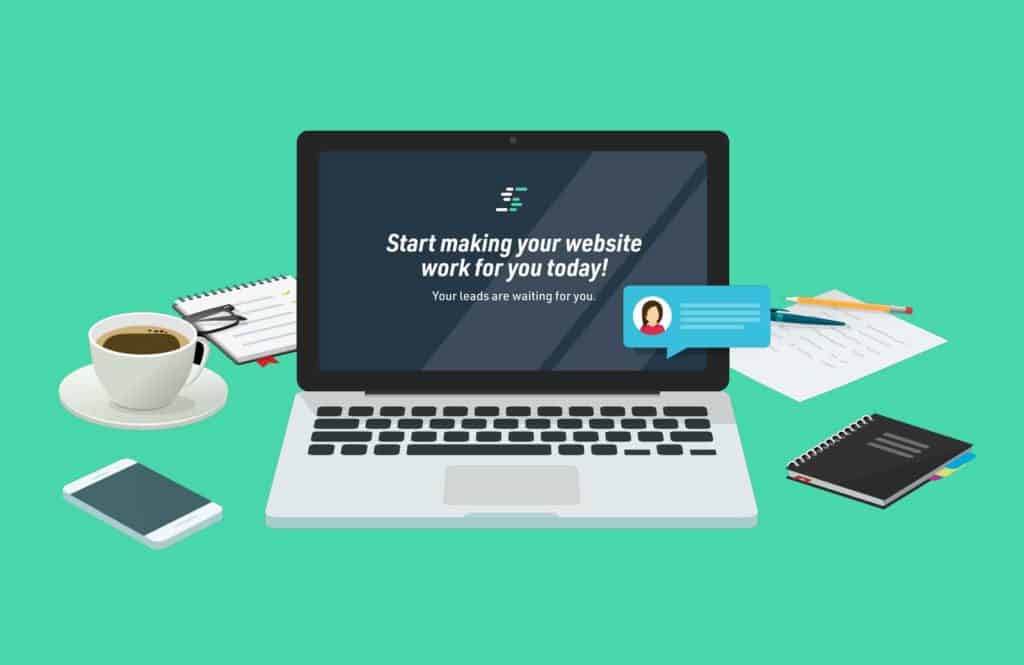
Ready to Take Your Search Hustle Further?


